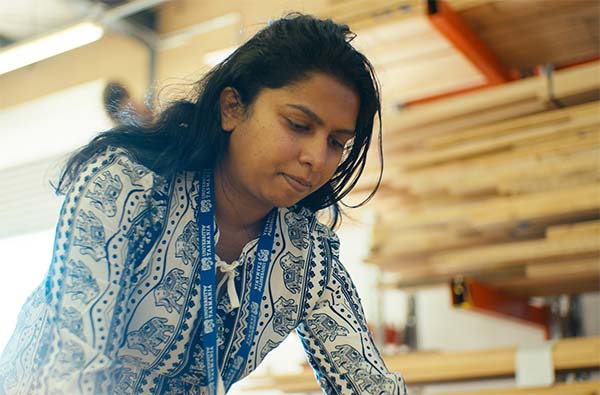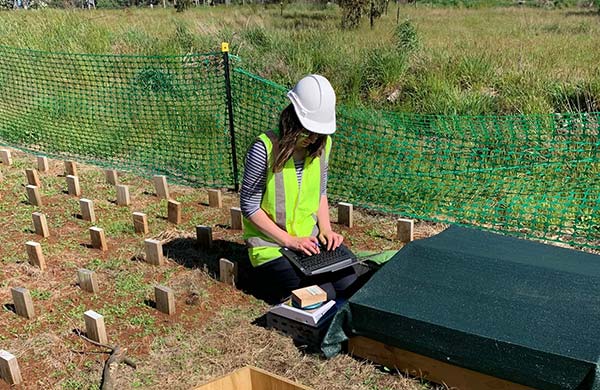Timber and wood products excel as mediums for architectural expressions in domestic, commercial, and public buildings. Their inclusion in surfaces and fittings invokes their natural origins and a unique charm.
Our team provides research and development services covering:
- Regenerative design with wood.
- The design, performance, and maintenance of architectural components in buildings.
- The development of new appearance products and systems from the available wood resource.
- The heritage characteristics of timber rich buildings.
Projects

Supervisors: Dr Nathan Kotlarewski, Dr Louise Wallas
Developing appearance products from relatively low-density plantation hardwoods in Australia requires some major challenges to be addressed. Some of them are due to lack of understanding of material properties, unavailability of standards addressing the plantation resources and the presence of natural features and strength reducing features. This research centres around the development of an engineered timber flooring product using Tasmanian plantation timber. The study examines the different aspects of flooring performance, the market conception and the challenges faced when introducing a non-conventional timber species for a flooring application. Key to this research is the development of engineered flooring prototypes using E. nitens plantation timber, which has the capability to be manufactured within the state.

NIF108 explores ways in which to demonstrate acceptable durability of natural and modified Tasmanian hardwood species in commercially relevant timeframes, tests material not covered by current durability standards, and establishes longer duration comparative trials of testing processes and material performance.
This project reviewed processes for including biodiversity impacts into Life Cycle Assessment (LCA) and explored the potential for a robust Australian LCA biodiversity indicator. This research project came about because there was no LCA indicator for biodiversity impacts on environmental assessment in Australia.
LCA's are increasingly being used as a means of determining the comparative environmental impact of building materials. However, the effectiveness of LCAs is limited for renewable materials such as timber as they usually begin at the point of resource extraction. They proposed using total land use as a proxy for biodiversity impacts.
As native biodiversity is affected less by managed native forestry than say, oil-seed production, equating land use to biodiversity impact can significantly disadvantage the assessment of timber as an environmentally preferable material.
This project seeks to explore means whereby the biodiversity impact of land uses, such as forestry, can be meaningfully included in the environmental assessment of timber and other building materials. It includes a review of existing biodiversity impact assessment methods, assessment of existing and potential impact surrogates, and the matching of these surrogates to accepted LCA processes.
The expected outputs from this project are:
- An assessment of methods for comparing the biodiversity impacts of producing timber and other building materials;
- A review of the credibility and rigour of surrogates for biodiversity impacts used in Australia and internationally;
- Definition of the potential to use an accepted surrogate or to develop a suitable surrogate for biodiversity in LCA processes;
- Significant progress in identifying a reliable biodiversity surrogate ready for use in LCA processes and
- The identification of areas for future work.